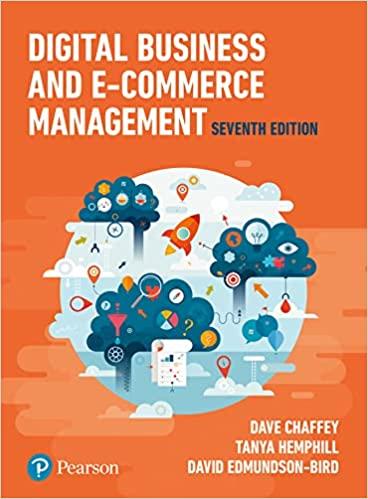Question
Activity 1A 1. Identify four ways to select effective and relevant team members. 1 2 3 4 2. List five ways to manage a team
Activity 1A
| 1. Identify four ways to select effective and relevant team members. 1 2 3 4 2. List five ways to manage a team effectively. 1 2 3 4 5 |
3. Briefly explain how to communicate working objectives, expectations and desired outcomes with team members.
4. List four work activities that will require communication.
1 | |
2 | |
3 | |
4 |
Activity 1B
Briefly describe five different methods of analysing and evaluating the performance and sustainability of key systems and processes.
1 | |
2 | |
3 | |
Activity 1C
1. Make a list of four people or groups who may be stakeholders in a business.
1 | |
2 | |
3 | |
4 |
2. Explain the benefits of stakeholder consultation.
3. List four different methods of stakeholder consultation.
1 |
2 | |||
3 | |||
4 |
Activity 1D
| 1. Explain the continuous improvement and innovation strategy/process and its benefits 2. Identify three different types of continuous improvement strategies. 1 2 3 |
3. Creating rapport is about using your interpersonal skills to communicate effectively with different people and build relationships. Explain why this is important?
Activity 2A
1. Identify the analytical steps that you should follow when considering the amount of variation from organisational plans.
2. Identify five reports that can be referenced when analysing performance. Briefly explain how they can be used.
1 | |
2 | |
3 | |
| 4 | |
| 5 |
Activity 2B
| 1. Identify four sources of information about trends specific to your business or industry. 1 2 3 4 2. Identify and briefly explain the three types of trend analysis methods. 1 2 3 |
3. Explain how to analyse and evaluate trends
Activity 2C
1. Explain how to collect data and analyse areas for improvement in supply chains, and operational and service systems.
2. What information is required to perform a gap analysis?
3. Explain how to conduct a gap analysis and identify improvement needs and opportunities in a business.
Activity 2D
1. Identify four different methods of communicating with team members.
1 | |
2 | |
3 | |
4 |
2. Explain how to choose the best method for communicating improvement needs and opportunities with team members
Activity 2E
1. Explain how to identify learning opportunities for team members. |
2. What steps should be taken after learning opportunities have been identified?
Activity 3A
| 1. Identify three different objectives for change. 1 2 3 2. List six communication methods that could be used to manage the implementation of change. |
| 3. Name three positive consequence and three negative consequences of business change. 4. Explain what transition plans are and why they are created. |
Activity 3B
1. Explain how a contingency plan should be implemented effectively in an organisation |
2. Apply the following contingency plan template to a negative event which may impact business. You may also complete for a hypothetical business and identify a situation or event that could impact it.
| Type of event | Likelihood | Potential impact | Appropriate response | Staff members involved | Resources required |
Activity 3C
To provide you with the opportunity to identify how to follow up failure by investigation andanalysis of causes and manage emerging challenges and opportunities. |
1. What methods can be used to identify and analyse the causes of different types of failure?
2. Explain how to follow up failure and limit the impact.
3. Briefly explain how to manage emerging challenges in a business.
4. Identify four different market research methods to identify opportunities.
1 | |
2 | |
3 | |
4 |
Activity 3D
1. Identify and explain five different ways of capturing learnings and information from business activities. |
2. Explain how knowledge management systems are used to capture and store learnings and information in a business.
Activity 4A
1. Describe the methods you can use to communicate and evaluate continuous improvement systems and processes.
2. Briefly explain why the costs and benefits of innovations and improvements should be communicated with stakeholders.
3. List three potential costs and three potential benefits of business innovations and improvements.
1 | |
2 | |
3 |
Activity 4B
1. Explain how you could establish rewards for continuous improvement, innovation and learning in an organisation.
2. Identify four non-financial rewards and incentives that could be introduced in an organisation.
1 | |
2 | |
3 | |
4 |
Activity 4C
To provide you with an opportunity to identify how to seek and respond to feedback fromrelevant stakeholders' systems and processes for continuous improvement, innovation andlearning. |
1. Explain how to seek feedback from relevant stakeholders. |
2. Explain how to effectively respond to feedback from relevant stakeholders.
Step by Step Solution
There are 3 Steps involved in it
Step: 1

Get Instant Access to Expert-Tailored Solutions
See step-by-step solutions with expert insights and AI powered tools for academic success
Step: 2

Step: 3

Ace Your Homework with AI
Get the answers you need in no time with our AI-driven, step-by-step assistance
Get Started


